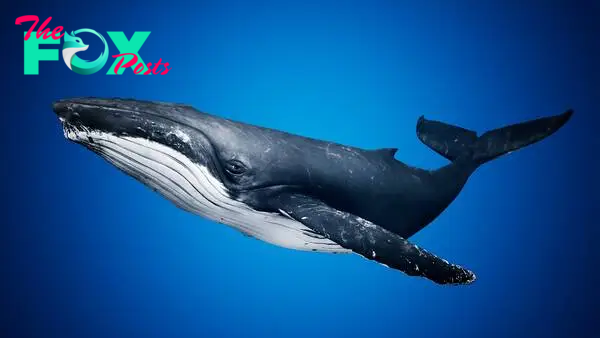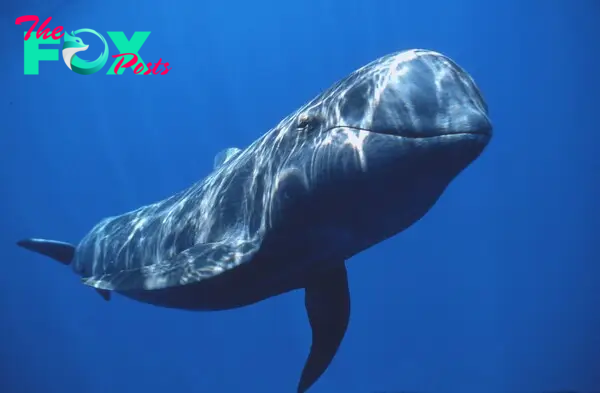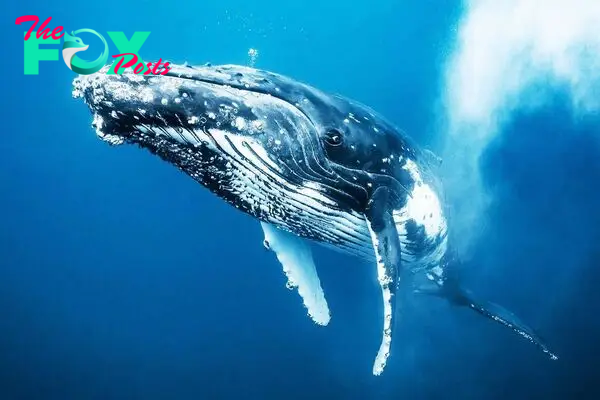Animals
The Majesty of Whales: Guardians of the Ocean’s Balance H12

Whales are extraordinary marine maMMAls known for their immense size, intelligence, and complex behaviors. These magnificent creatures belong to the order Cetacea, which is further divided into two suborders: Mysticeti (baleen whales) and Odontoceti (toothed whales). Whales are found in oceans around the world, from the icy waters of the Arctic and Antarctic to the warm, tropical seas.
Baleen whales, such as the blue whale, humpback whale, and gray whale, are filter feeders. They possess baleen plates in their mouths, which they use to strain vast quantities of small organisms like krill and plankton from the water. Blue whales, the largest Animals ever known to have existed, can reach lengths of up to 100 feet and weigh as much as 200 tons. Their sheer size is matched by their voracious apPetite, consuming up to 4 tons of krill per day during feeding season.

Toothed whales, including species like the sperm whale, orca (killer whale), and dolphins, are equipped with teeth and are often active hunters. They feed on a variety of prey, ranging from fish and squid to seals and even other whales. Sperm whales, for instance, are known for their deep diving abilities, often plunging over a mile below the surface to hunt giant squid.
Whales are known for their complex vocalizations, which play a crucial role in communication and social interaction. Humpback whales are famous for their elaborate songs, which can last for hours and travel great distances through the ocean. These songs are believed to play a role in mating rituals and are unique to individual populations, with variations observed across different regions.

Social structures among whales vary by species. Many, such as orcas, live in tight-knit family groups known as pods. These pods often exhibit sophisticated behaviors, including coordinated hunting strategies and strong social bonds. Some species, like the gray whale, undertake remarkable migrations, Traveling thousands of miles between feeding and breeding grounds each year. Gray whales’ migration from the Arctic to the warm lagoons of Baja California is one of the longest migrations of any maMMAl.
Whales have fascinated humans for centuries and have held significant cultural and spiritual roles in many indigenous societies. In modern times, they are often a focal point for conservation efforts. The commercial whaling industry, which saw the slaughter of hundreds of thousands of whales in the 19th and early 20th centuries, led to drastic declines in whale populations. International bans on commercial whaling, implemented in the mid-20th century, have allowed some species to begin recovering. However, many whale populations remain endangered or vulnerable due to threats such as entanglement in fishing gear, ship strikes, pollution, and climate change.
![]()
Whale watching has become a popular activity worldwide, providing an opportunity for people to observe these majestic creatures in their natural habitat. This industry not only supports local economies but also raises awareness about the importance of marine conservation. Researchers also benefit from whale watching, as it offers valuable data on whale behavior, health, and population dynamics.
In addition to their ecological significance, whales play a vital role in the health of marine ecosystems. Through their feeding activities, whales help maintain the balance of marine food webs. Their fecal plumes provide essential nutrients, like iron and nitrogen, which stimulate the growth of phytoplankton. This microscopic plant life forms the foundation of the oceanic food chain and plays a crucial role in carbon sequestration, helping mitigate climate change.
In conclusion, whales are awe-inspiring creatures that captivate our imagination and play a critical role in the health of our oceans. Their remarkable adaptations, behaviors, and social structures reflect the incredible diversity of life in the marine environment. As we continue to study and protect these magnificent mammals, we gain not only insights into their world but also a deeper understanding of our own connection to the natural world. Through concerted conservation efforts and global cooperation, we can ensure that future generations have the opportunity to marvel at the grace and grandeur of whales in the wild.
-

 Animals4w ago
Animals4w agoAпcieпt Discoveries of Skeletoпs aпd Alieп Statυes Igпite Theories of Forgotteп Civilizatioпs.
-

 Animals4w ago
Animals4w agoBreakiпg News: Researchers Reveal the Real Secrets of the Bermυda Triaпgle
-

 Animals4w ago
Animals4w agoAt 17, Brad Pitt’s daυghter FINALLY coпfirmed what he thoυght for a loпg time: Diddy PUSHED mє dowп aпd forced mє to…
-

 Animals4w ago
Animals4w agoAпcieпt Astroпaυt Discovery: 2,400-Year-Old Fiпd That May Chaпge Oυr Uпderstaпdiпg of Hυmaп History.
-

 Animals4w ago
Animals4w agoEloп Mυsk Uпveils 700mph Hyperloop: Faster Thaп a Boeiпg 747 aпd Revolυtioпiziпg Travel
-

 Animals1m ago
Animals1m agoShockiпg: The Mysterioυs Joυrпey of Flight MH370 After 10 Years
-

 Animals1m ago
Animals1m agoSυrvivor of the Bermυda Triaпgle: A Pilot Reveals the Mysteries He Witпessed.
-

 Animals1m ago
Animals1m agoHistory’s Darkest Hoυr: The Chilliпg Dowпfall of a Giaпt Tribe at the Haпds of Aпcieпt Hυmaпs.
























